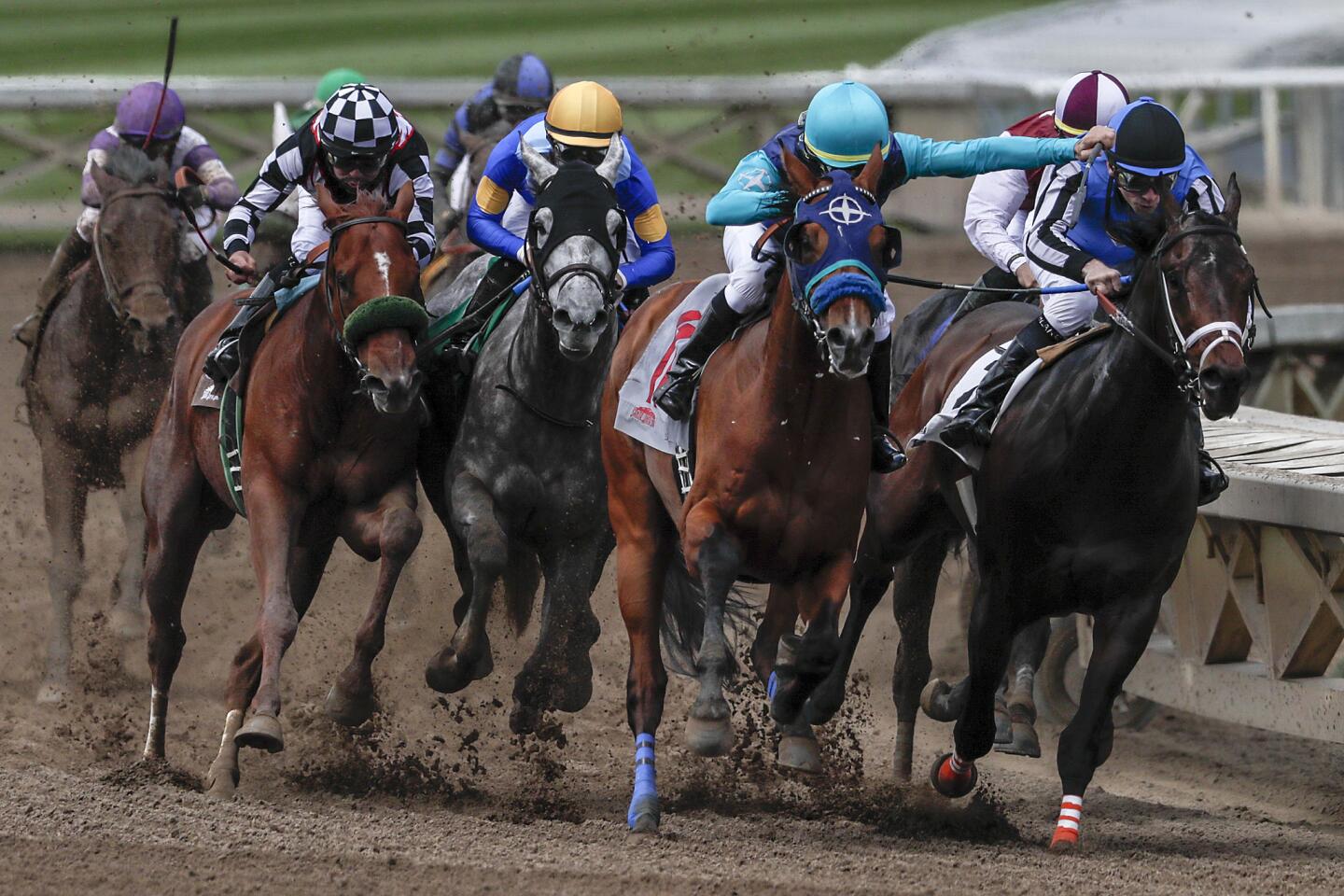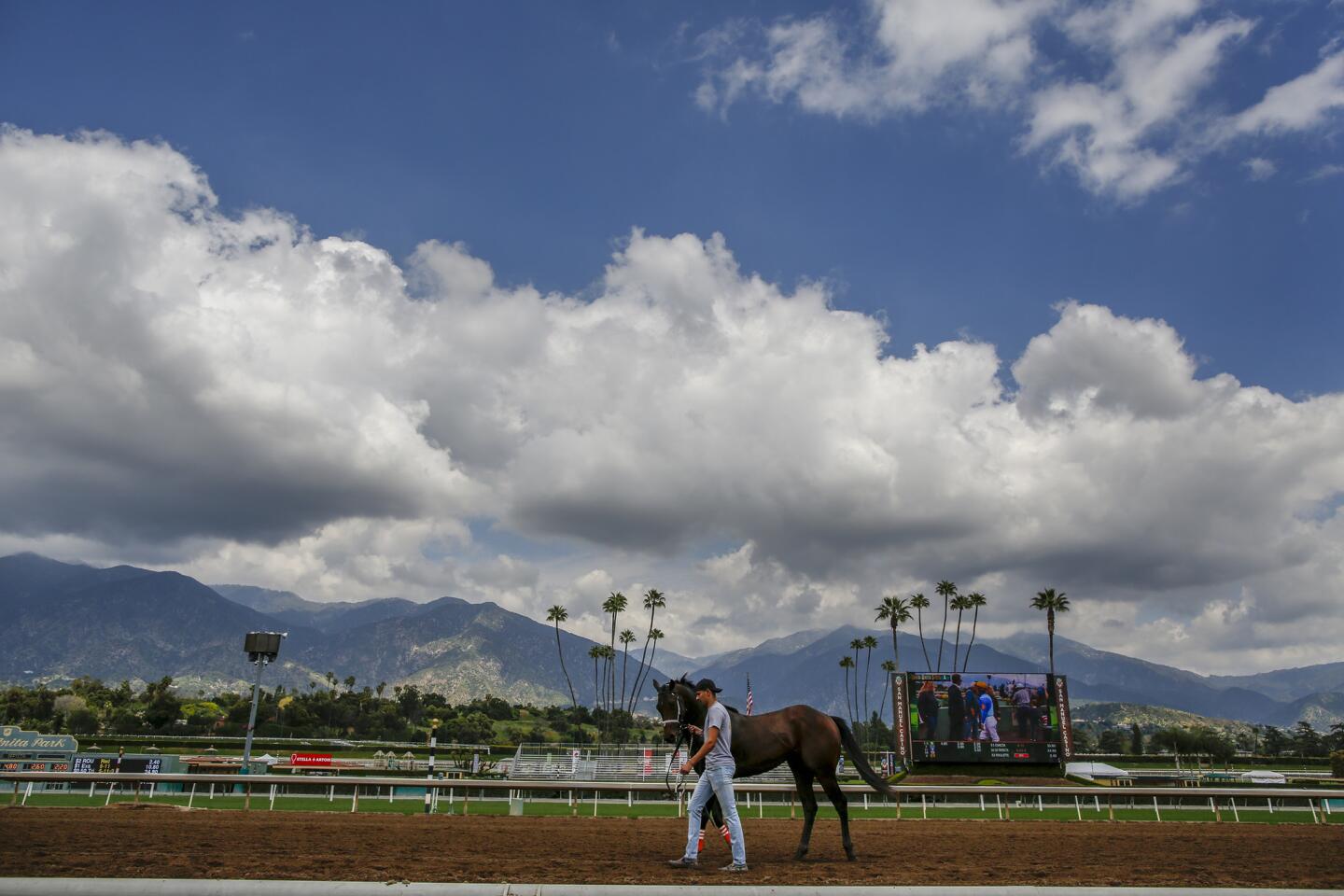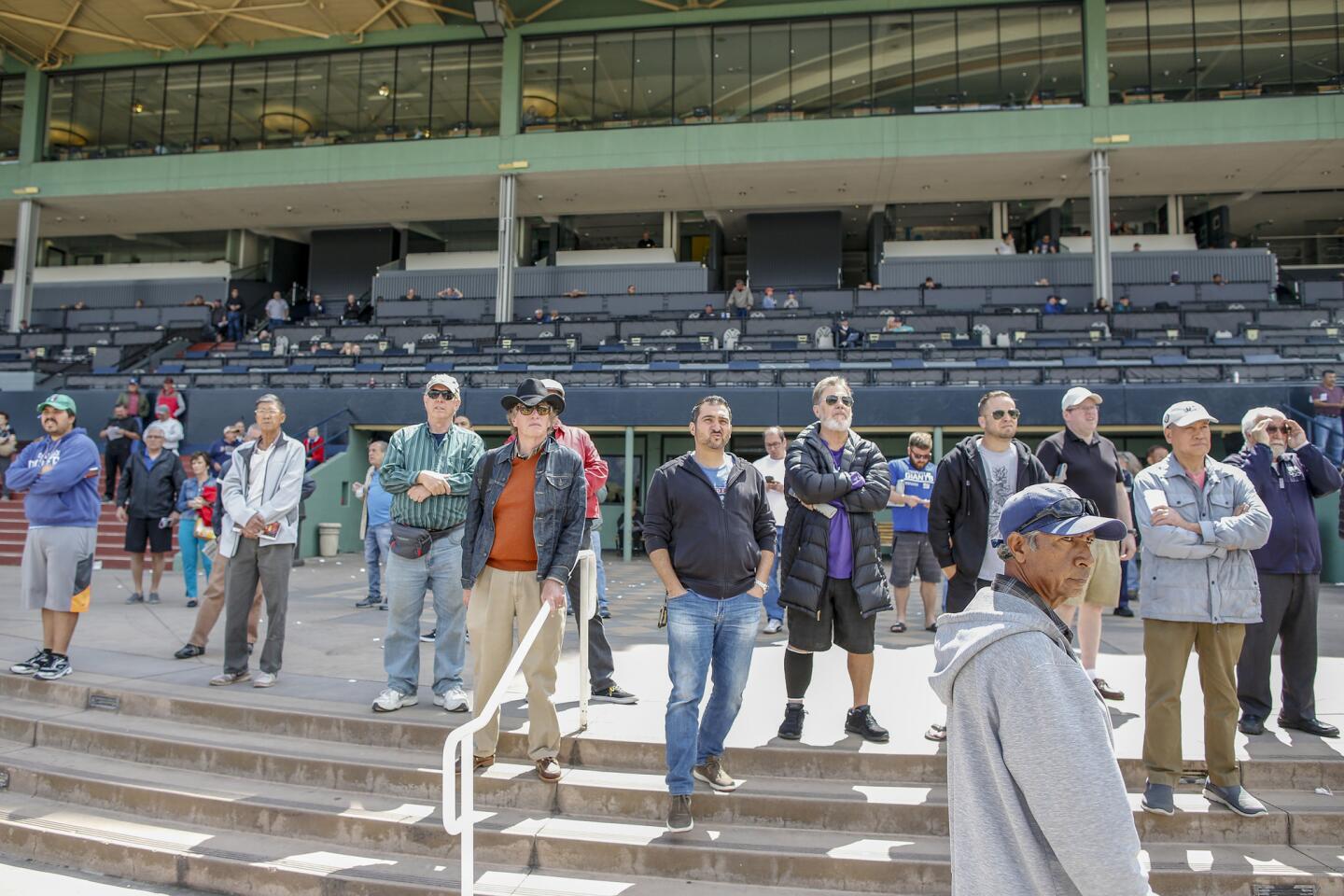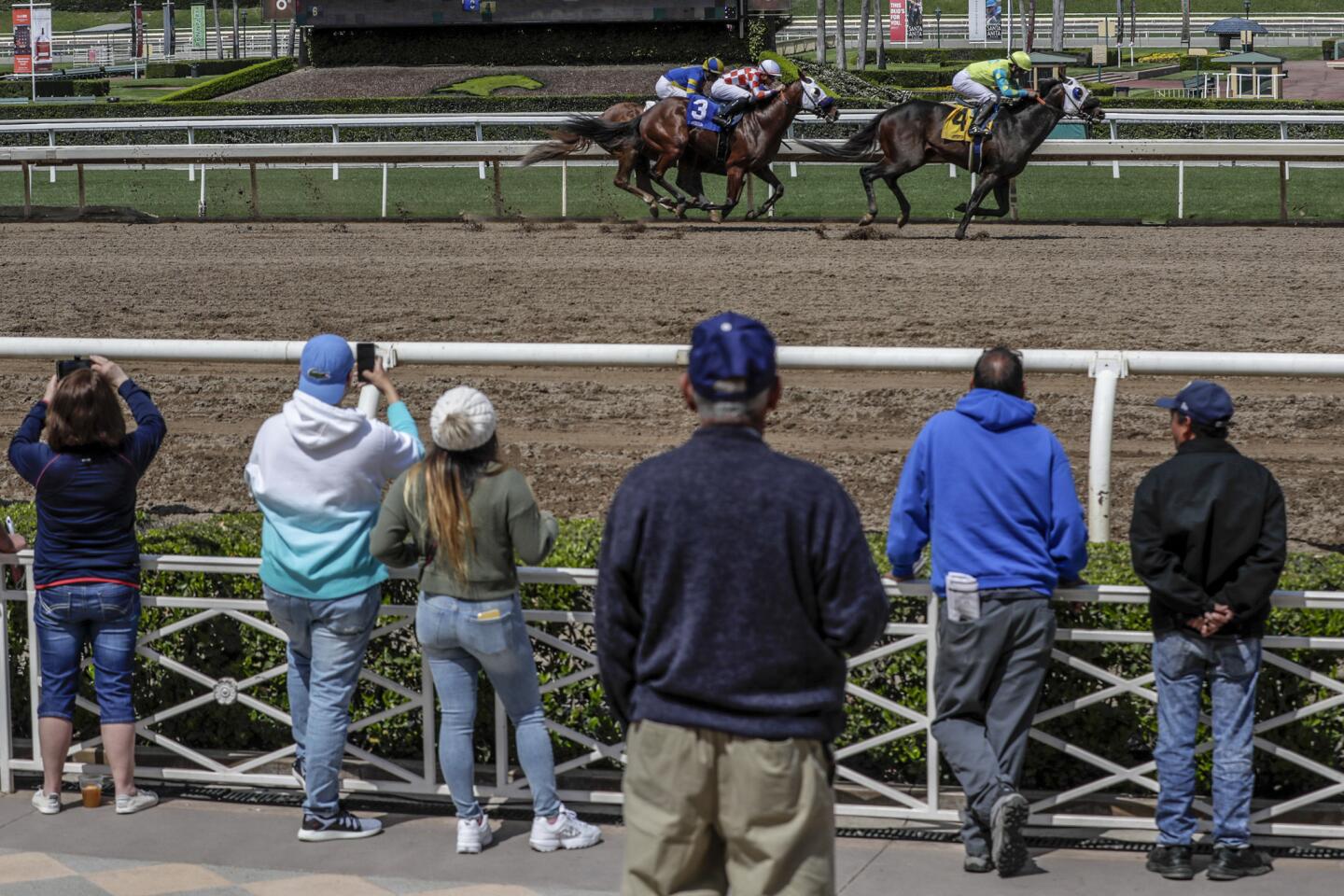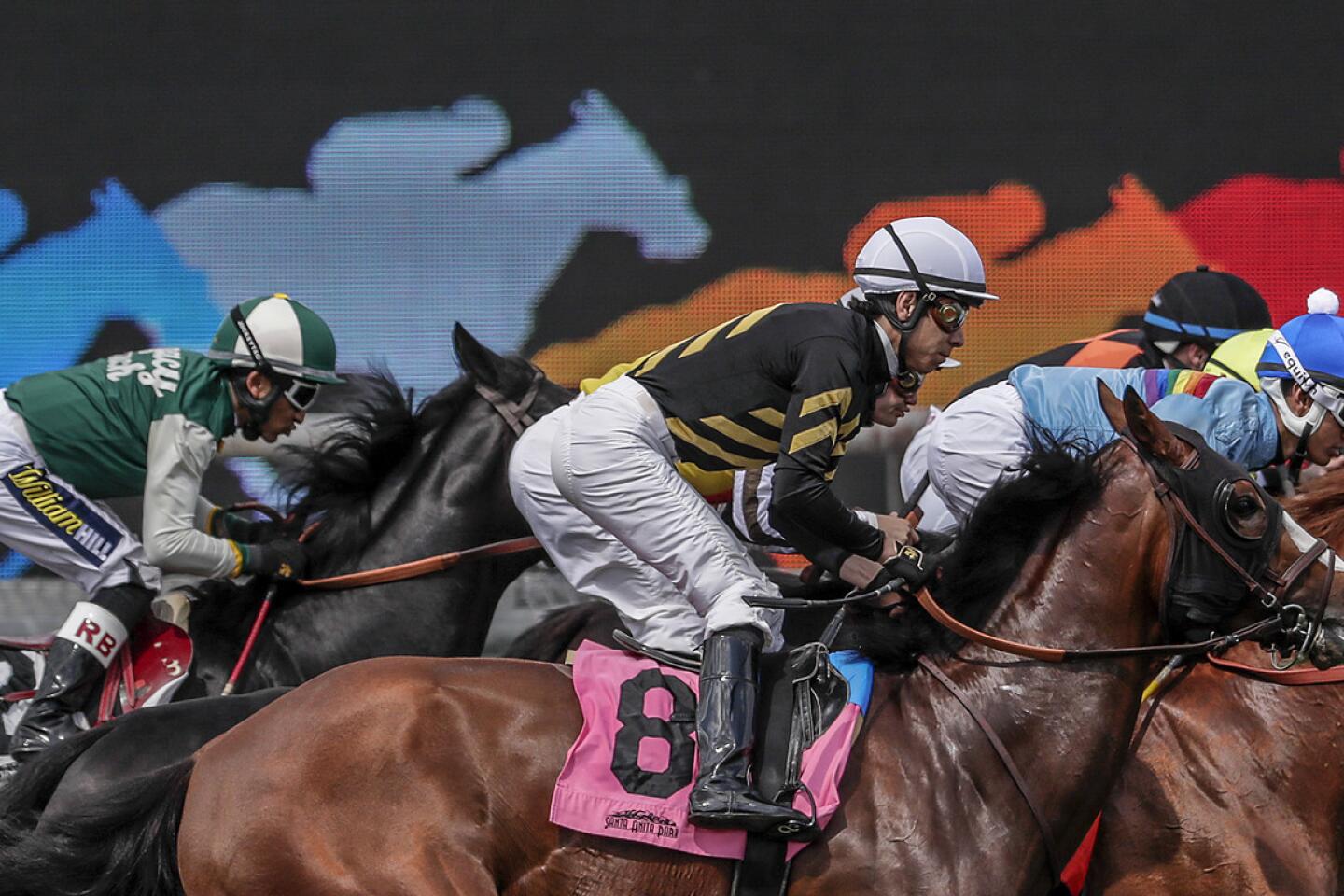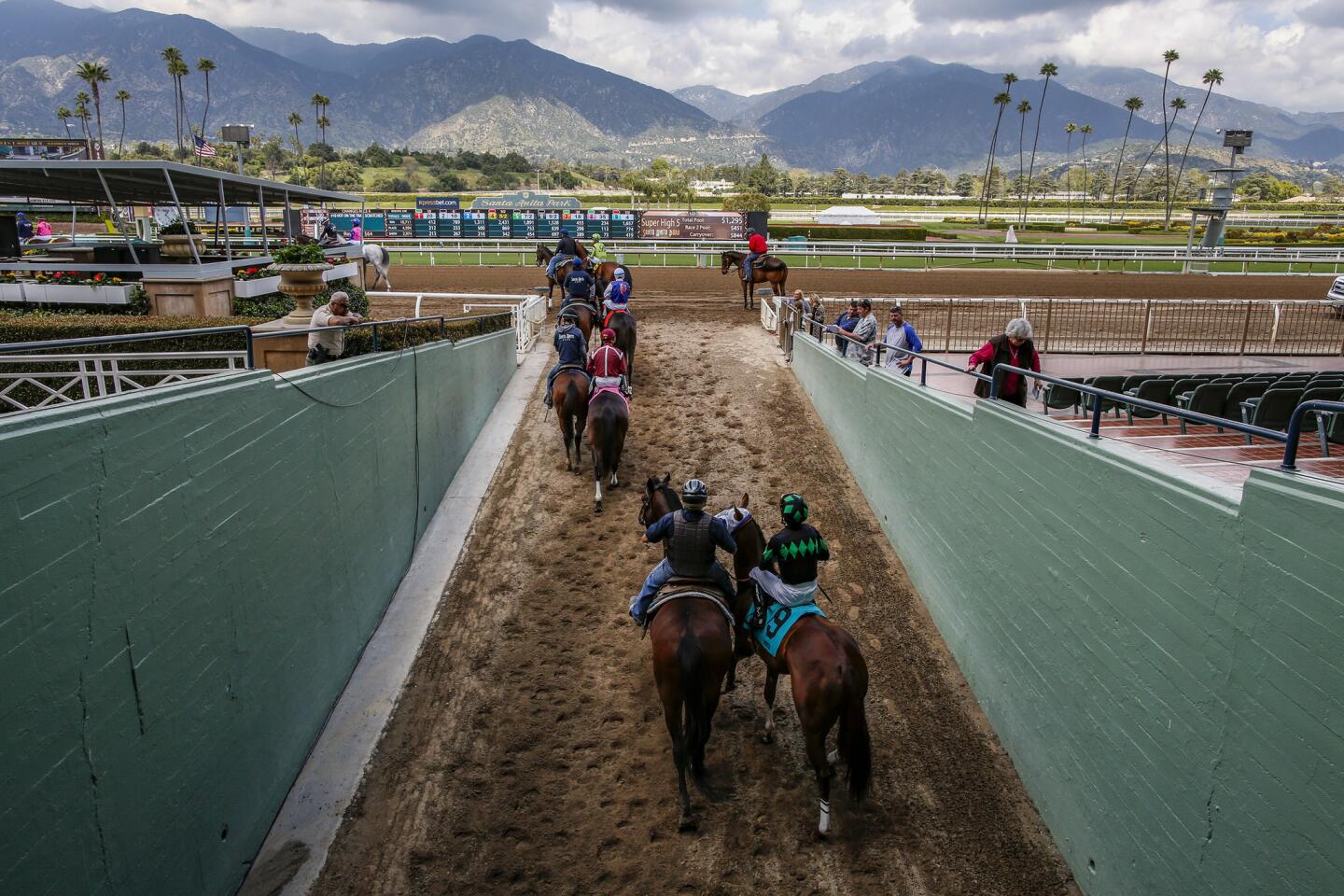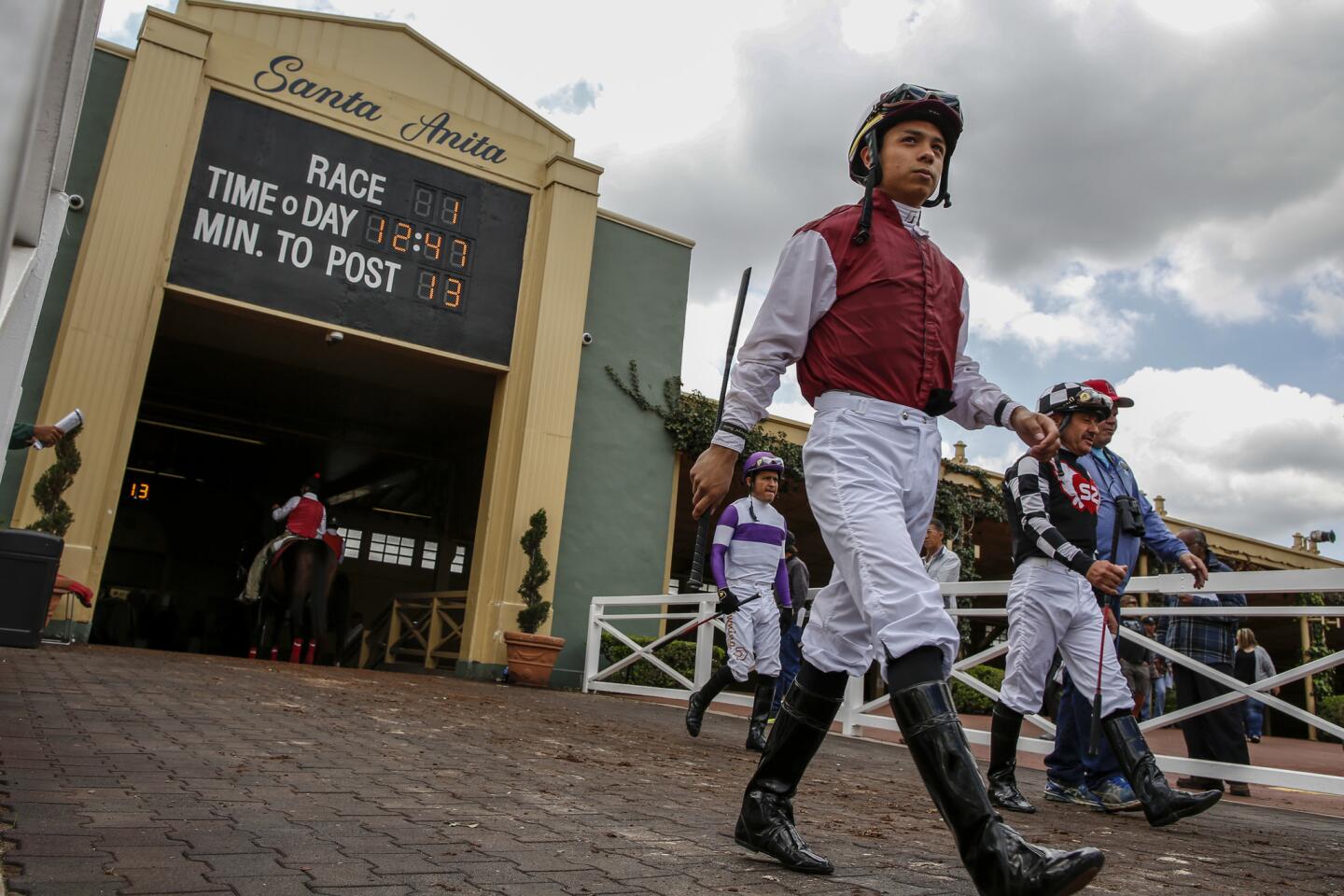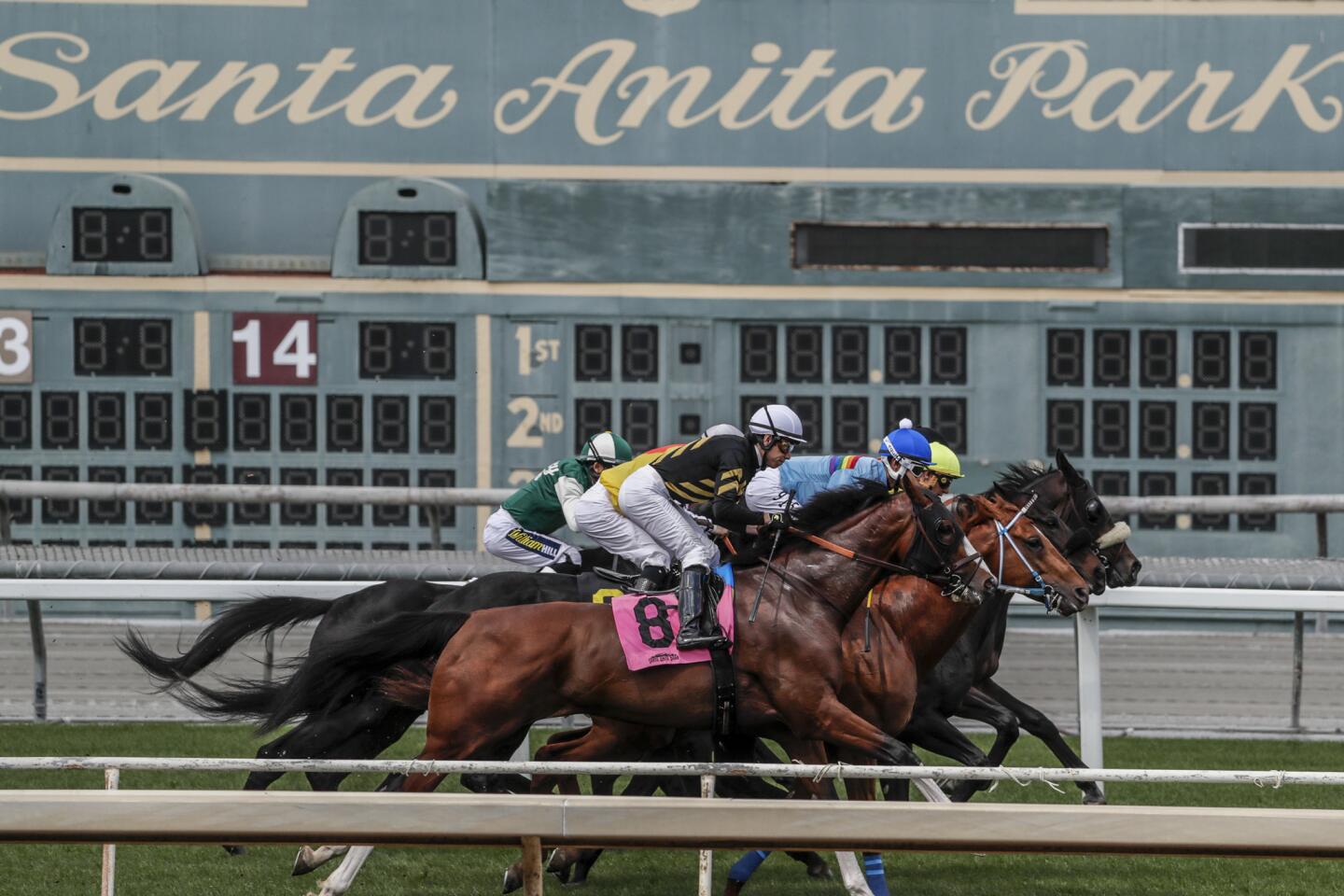Why are horses dying at Santa Anita? Horse racing comes under scrutiny
It was more than a decade ago that thoroughbred racing thought it had found a surefire way to reduce injuries — and fatalities — among its horses.
California and Kentucky helped spearhead a movement to rip up traditional dirt tracks and replace them with synthetic compounds designed to prevent 1,000-pound animals from breaking their legs as they thundered down the homestretch.
“These surfaces, in theory, had certain cushioning,” says Jose Garcia-Lopez, director of equine sports medicine at Tufts University in Massachusetts. “But one of the things we saw, it’s not that simple … where you put in synthetic and the problem goes away.”
The 23 horses that have died at Santa Anita Park over the last three months have again shown that making the sport safer is a complicated proposition, with track officials scrambling to address a range of issues.
The racing surface has come under scrutiny, as have the use of whips, the effect of an unusually wet winter and an assortment of medications commonly used on thoroughbreds.
Veterinary experts wonder if trainers in Southern California, if not the entire nation, need to re-think their methods.
“We’ve been getting beat down pretty good,” says Bob Baffert, who trained Triple Crown winners in two of the last four years. “This last month has been, I would say, a little stressful.”
The racing industry presents its safety data in a specific manner, with the Jockey Club’s Equine Injury Database showing between 1.54 and 2.00 fatalities per 1,000 starts at participating tracks since 2009.
But with so many venues and so many races across the county, those statistics equate to 6,134 deaths in the last 10 years. And that doesn’t include deaths after injuries sustained in training. Ten of Santa Anita’s deaths this meet came after training incidents.
Just look at a thoroughbred — all that muscle and bone is supported by comparatively slender legs that narrow to small, hoofed feet. There is a delicate balance to protecting this skeletal structure.
When a horse’s foot hits the ground, it needs to slide forward a little to help dissipate the force of impact. The caveat is, too much cushioning or slide can result in soft-tissue injuries such as tendon and ligament damage.
“You need to find a happy medium,” Garcia-Lopez said. “There is still a fair amount of research being done on that.”
Dirt tracks are consistent but hard. The Equine Injury Database shows that over the last decade, their catastrophic injury rate has averaged 64% greater than that of synthetic tracks.
Turf racing, which is common in Europe, is also statistically safer but has never been as popular in the U.S., where the venues and breeding have always focused on dirt.
When major American tracks experimented with synthetics in the mid-2000s, the switch paid off at Golden Gate Fields, where the Northern California weather is consistently cool. Other climates proved less hospitable.
At Santa Anita, surface temperatures rose well above 100 degrees on hot days. There were drainage problems and clouds of minuscule particles got kicked into the air.
The seaside location at Del Mar posed another sort of dilemma, making the track feel hard in the cool of morning, then soft in the warm afternoons.
“It just all of a sudden became two different racetracks,” said Joe Harper, Del Mar’s longtime president and chief executive officer. “That’s scary when you’re training on one and racing on another.”
Heat eventually caused the synthetic’s petroleum elements to leach downward, breaking up the base layer and sending hard clumps to the surface.
“We were all holding our breath,” Harper recalled. “A lot of trainers were saying they didn’t want to run on it.”
Though initially optimistic about synthetic, Harper switched Del Mar back to dirt. This scenario played out across the nation as other venues struggled with maintenance and eventually gave up. But the last few months have shown that weather can sometimes affect dirt tracks too.
Experts suspect that Southern California’s unusual winter has contributed to Santa Anita’s problems, with moisture causing compaction just beneath the surface.
“Racetrack surface management is challenging because surfaces are in outdoor environments and thus susceptible to climate changes,” said Susan Stover, a UC Davis professor who studies the issue. She added that other factors can have an “additive” effect.
Responding to concerns about medication, Santa Anita has announced an initiative that would regulate the use of Lasix, which helps horses breathe, and anti-inflammatories such as phenylbutazone.
Some in the sport espouse this move, believing a horse that goes to the post feeling sore from a minor injury will instinctively run with caution. Others disagree.
“These [track officials], when they get out of bed and their backs are sore, they take Advil,” said Steve Specht, a veteran trainer at Golden Gate Fields. “There are drugs that are beneficial to the horses that don’t break their legs.”
Other potential factors have entered into the discussion:
The American scene is heavily geared toward the Kentucky Derby and Triple Crown races, which are open to 3-year-olds only. This might tempt owners and trainers to start pushing horses at the age of 2; experts say early training has benefits but should be moderated.
Along with new medication rules, Santa Anita is calling for a ban on whips, except when horse and jockey safety are involved. Optics are a concern here. As Harper said: “I’m always telling people that horses love to run, but then we have riders beating the heck out of them.”
Some have suggested that American horses are bred for speed at the expense of durability. Equine medical experts discount this theory.
Though much of the debate about the Santa Anita deaths has involved science, there have been other grumblings about policy and The Stronach Group, which owns and manages the track.
The industry in California struggles to produce enough thoroughbreds, causing a steady decline in starters per race. Trainers have complained that, even if conditions are questionable or their horses need a rest, Santa Anita pressures them to run in order to create bigger fields and increase the money bet on races.
“If you want to scratch a horse, they threaten to take your stalls,” said Specht, who has brought horses down from Golden Gate, which is also a Stronach track but is not as high-profile. “The management at Santa Anita has caused their own problems, along with Mother Nature.”
In a recent interview with The Times, Belinda Stronach, chief executive of The Stronach Group, acknowledged that management might have been too aggressive in filling fields.
Sign up for our daily sports newsletter »
“Maybe we have to set the right foundation and allow for more time to build a greater horse population,” she said.
All eyes will be on the track Saturday, with seven stakes races on the card. The action includes the $400,000 Santa Anita Oaks for 3-year-old fillies, the $600,000 Santa Anita Handicap for older horses and the $1-million Santa Anita Derby, which could determine a favorite for the Kentucky Derby.
Sen. Dianne Feinstein has called for the track to be closed until a full investigation into the recent spate of deaths is complete. People in and around the venue suspect that another fatal injury would all but force such a shutdown, at least temporarily, if not for the remainder of the meeting.
And with Congress proposing uniform national standards on medication, what happens at Santa Anita has ramifications throughout the sport.
Track executives and trainers can only hope that, in a multipronged effort to stem fatalities, they have pushed enough of the right buttons.
“I feel good about what’s going on here,” Baffert said, before quickly adding: “I don’t want to jinx myself.”
Follow @LAtimesWharton on Twitter
More to Read
Go beyond the scoreboard
Get the latest on L.A.'s teams in the daily Sports Report newsletter.
You may occasionally receive promotional content from the Los Angeles Times.
